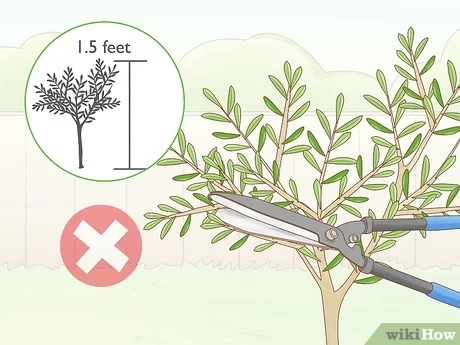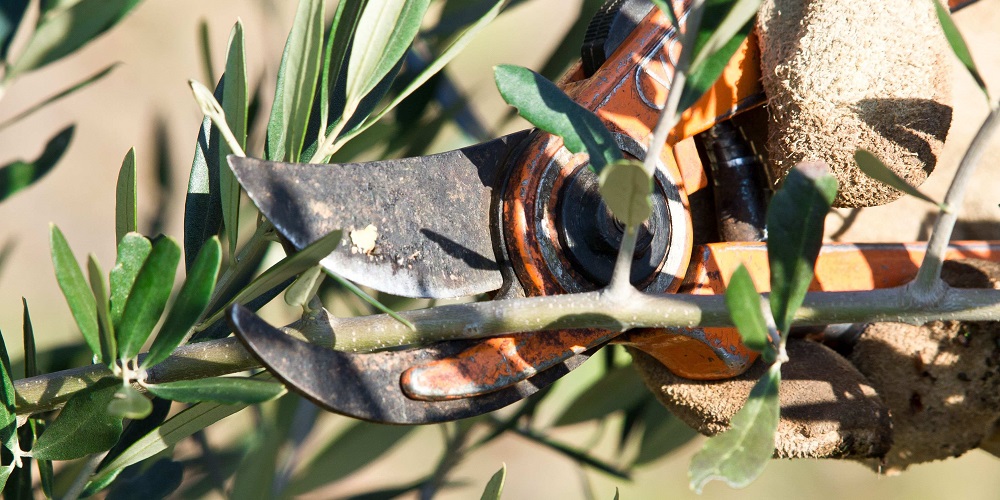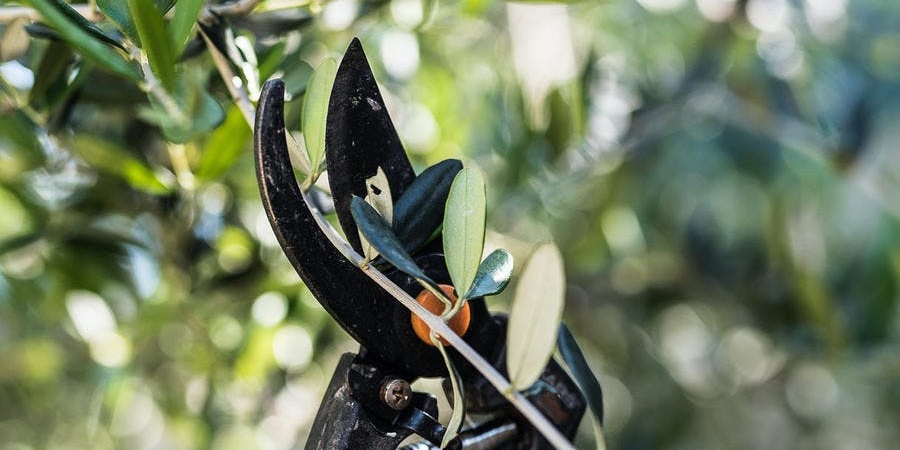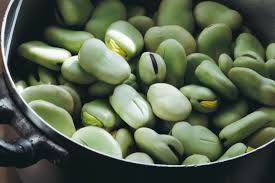How to prune an olive tree correctly?

The olive tree is one of the best-known trees in the Spanish geography, and is also a source of livelihood for many people. This tree, despite its resistance, requires certain care. One of the most important is the pruning process, which varies according to the age of the plant.
Those who live in Spain, especially in the Mediterranean basin, have the olive tree as a neighbor. It is enough to go on a trip along any road to see extensive plantations of this tree. We also see it in small fields when we go for a walk in the countryside and it is even a common species in many cities, being used as an ornamental tree.
One of the secrets of this species is its great resistance, which withstands periods of drought and even grows wild. However, whether it is trees intended for olive production or ornamental specimens, it is convenient to know how to care for them. One of the main ones is pruning, in which olive branches that may affect the growth and development of the plant are removed. A process that appears in any olive tree treatment guide and that varies according to the age of the specimen and its specific needs.
When are olive trees pruned?
The first thing we have to know is that the pruning of the olive tree should be carried out approximately every two years, in general. On the other hand, the olive tree pruning season includes the period from autumn to winter. However, if the winters are very cold in the area, it is advisable to delay pruning to the months of February and March. The reason is that this additional tree mass protects the tree against the low temperatures of that time.
In any case, pruning must be done when the vegetative activity of the tree is reduced . Therefore, if we see that the bark is coming off, we should not carry out the pruning. This effect occurs when the tree is growing, showing that there is activity. Just the opposite that we need for pruning.
How to prune an olive tree
When it comes to knowing how to prune olive trees, it is important to take into account the characteristics of the tree that we are going to treat, since the young olive tree is not the same as the old or ornamental one. Therefore, we are going to see the differences between each of these pruning processes.

How to prune a young olive tree
The young olive tree or in formation is one that is in the first years of its sowing. The pruning of these plants is carried out annually, assuming an exception to the biannual period that we have mentioned. The objective of this pruning of the young olive tree is to create a suitable shape and orientation , which facilitates the collection of the olive or generates a pleasant design, in the case of being an ornamental olive tree.
To do this, it is recommended to tie a kind of orientation bars that mark the height of the tree, around one meter high. The idea is to prevent secondary shoots from coming out beyond the main one, so we will proceed to clean the trunk of what is left over. After three years, pruning will serve to eliminate diseased and broken branches. It is also advisable to lighten the glass, so that the sun reaches the base well.
How to prune an olive tree in production
The production phase is the one in which the tree begins to bear fruit. During this phase, the idea is to eliminate the oldest and least productive branches, allowing the young branches to grow. As always, it is necessary to ensure an adequate solar contribution to all the branches, since this light is key for growth. Therefore, in this process it is also convenient to eliminate the excess branches in the upper part, especially if they are not very productive.
In the case of pruning the ornamental olive tree, in this phase the shape of the tree continues to be traced. The idea is to maintain an adequate supply of light to the base of the tree, while also achieving a suitable shape. A question in which the gardener’s art begins to unfold.

How to prune an old olive tree
Finally, it is time to talk about the pruning of the old olive tree. Let us remember that this tree can live for nearly a thousand years , maintaining a high production during the first hundreds of them. In this aging phase, it is necessary to identify the oldest branches, which will be the ones that we must eliminate.
The old branches of the olive tree are recognized by details such as a greater thickening or a lower presence of leaves, which indicates their low vital activity. In return, the branch consumes a large amount of energy, which it steals from the younger branches. In this pruning, broken and diseased branches must also be removed, ensuring the aforementioned transit of sunlight to the lower part of the tree.
Running the pruning
To prune an olive tree, it is necessary to use suitable tools, such as shears, axes or chainsaws. We will choose one or another option depending on the thickness of the branch to be cut. Making clean cuts is key. In the event of wounds, it is essential to use a suitable sealant.
Although there are different opinions about it, it is best to start from the top down . In this upper part are the oldest branches and also those that steal the most sun from the base. This descending process allows us to form the cup and follow the traced line as we go down towards the ground.
Finally, although it does not belong exclusively to the pruning phase, we must not forget the olive tree subscriber. Due to the size of the trees and the cultivated areas, it is obvious that we will have to save the watering cans (you can find here some options to compare) for the bonsai olive trees.
The problem of the subscriber is that a single product is not used nor do we look at a specific time, since the need for nutrients varies throughout the year. It is important to run a soil and plant analysis. This allows centering that subscriber according to the scarcest nutrient in the development of the plant. An issue that requires much more attention than the pruning process that we have discussed.




